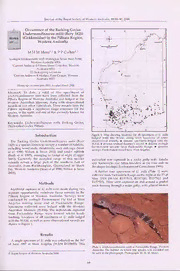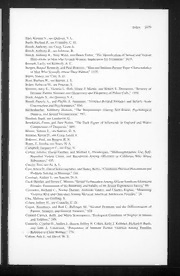
Cooperative Joint Localization and Clock Synchronization Based on Gaussian Message Passing in Asynchronous Wireless Networks PDF
Preview Cooperative Joint Localization and Clock Synchronization Based on Gaussian Message Passing in Asynchronous Wireless Networks
1 Cooperative Joint Localization and Clock Synchronization Based on Gaussian Message Passing in Asynchronous Wireless Networks Weijie Yuan, Nan Wu, Bernhard Etzlinger, Hua Wang and Jingming Kuang 6 1 0 2 n a J 3 Abstract 1 ] Localization and synchronization are very important in many wireless applications such as moni- T I toring and vehicle tracking. Utilizing the same time of arrival (TOA) measurements for simultaneous . s c localization and synchronizationis challenging.In this paper, we present a factor graph (FG) represen- [ tationofthejointlocalizationandtimesynchronizationproblembasedonTOAmeasurements,inwhich 1 v the non-line-of-sight measurements are also taken into consideration. On this FG, belief propagation 8 (BP)messagepassingandvariationalmessagepassing(VMP)areappliedtoderivetwofullydistributed 1 1 cooperativealgorithmswith lowcomputationalrequirements.Due to the nonlinearityin the observation 3 0 function, it is intractable to compute the messages in closed form and most existing solutions rely on . 1 Monte Carlo methods, e.g., particle filtering. We linearize a specific nonlinear term in the expressions 0 6 of messages, which enablesus to use a Gaussian representationforall messages. Accordingly,onlythe 1 : mean and variance have to be updated and transmitted between neighboringnodes, which significantly v i X reducesthecommunicationoverheadandcomputationalcomplexity.Amessagepassingschedulescheme r is proposed to trade off between estimation performance and communication overhead. Simulation a results show that the proposed algorithms perform very close to particle-based methods with much lower complexity especially in densely connected networks. This work is supported by the “National Science Foundation of China (NSFC)” (Grant No. 61201181) and “A Foundation for the Author of National Excellent Doctoral Dissertation of P. R. China (FANEDD)” (Grant No. 201445). W.Yuan,N.Wu,H.WangandJ.KuangarewiththeSchool ofInformationandElectronics,BeijingInstituteofTechnology, Beijing, China (Email: {wjyuan, wunan, wanghua, jmkuang}@bit.edu.cn). B. Etzlinger is with the the Institute of Communications Engineering and RF-Systems, Johannes Kepler University, Linz, Austria (Email: b.etzlinger@nthfs.jku.at). Corresponding author: Nan Wu January14,2016 DRAFT 2 Index Terms Joint Localization and Synchronization, Factor Graph, Belief Propagation, Variational Message Passing, Gaussian Message Passing, Message Passing Schedule I. INTRODUCTION Wireless networks play a main role in the modern societies. For many applications of wireless networks such as public service, emergence rescue and intelligent vehicular system, position information is a crucial requirement for the network to function as intended [1]. Generally, the Global Positioning System (GPS) can provide accurate location in our daily life. However, equipping all wireless nodes (e.g., sensors, vehicles, people) with GPS receivers may be cost and energy prohibitive. Furthermore, the poor signal penetration capabilities of the widely used GPS lead to inadequate location information [2]. A cooperative localization algorithm [3] that enables ranging and position information exchange between neighboring nodes can overcome this problem. During the last ten years, there are many research papers focused on cooperative localization algorithms in wireless sensor networks, vehicular networks and acoustic sensor networks [4]–[8]. Those cooperative localization methods are based on a set of nodes with known locations and on a set of range measurements among neighboring nodes. The range measurements can be obtained using timeof arrival (TOA) [9], timedifference of arrival (TDOA) [10], round-trip time of arrival (RTT) [11] or received signal strength (RSS) [12] measurements. RSS measurements have the drawback of being sensitive to changes in the environment, whereas the time-based methods alleviate this problem. Moreover, since TDOA and RTT mechanisms may not be supported by many communication protocols, we will focus on TOA-based techniques. However, utilizing TOA measurements to obtain accurate range estimates is difficult in the presence of time offsets among the nodes. Hence, clock synchronization is a vital requirement in TOA based localization methods. Various synchronization algorithms have been proposed in the literature. In [13] and [14], two synchronizationprotocols, namely, Timing-syncProtocol for Sensor Networks (TPSN) and Flooding Time Synchronization Protocol (FTSP), are proposed. In [15], consensus algorithms are used to synchronize all the nodes to the same virtual clock. A factor graph (FG) based distributed network synchronization algorithm using belief propagation is proposed in January14,2016 DRAFT 3 [16]. An extension to mean-field message passing for cooperative synchronization algorithm is obtained in [17], which has the advantage of broadcasting information to neighboring nodes. The literature above treat time synchronization independent of the localization task. However, the two problems are closely related and it is possible to explore a joint estimation method. Furthermore, in a harsh or mobile environment, the clock of nodes varies and re-synchronization between nodes frequently increases the energy consumption. Recently, based on the closed relationship between the problems of localization and synchronization, several research works have studied simultaneous estimation of positions and clock information of nodes. In [18], the two problems are solved together by performing time synchronization first and then localization, which is not a strict simultaneous approach. The joint time synchronization and localization problem with accurate and inaccurate anchors have been solved in [19] using least squares (LS) and generalized total least squares (GTLS) methods, which is a hierarchical protocol that poses strong topological constraints on the network. A closed-form solution of joint estimation using weighted least squares (WLS) is proposed in [20].In [21], the authors extend Bancroft’s algorithm[22]toovercometheproblemofsolutionambiguityusingLScriterion.Anexpectation- maximization(EM)based algorithmwhichrecursivelyestimatestheclockparameterandposition of unknown node is presented in [23]. However, in the above methods, only one node to be synchronized and located is considered, which is different to the situation in cooperative localization where nodes help each other to achieve self-localization and network synchronization. In [24] and [25], a particle-based belief propagation (BP) algorithm and hybrid message passing algorithm, respectively, have been proposed forcooperativesimultaneouslocalizationandsynchronization.Althoughthealgorithms are fully distributed and enable synchronization and localization of multiple nodes, they rely on particle filtering to deal with nonlinear expressions in the message computation. Moreover, the non-line-of-sight (NLOS) propagation in indoor environments can delay the TOA even when the whole network is synchronous, which leads to a positively biased range measurement [?]. The NLOS in the localization problem has been investigated in several pa- pers. In [26], the NLOS problem in UWB signaling is considered. Sum-product algorithm and expectation propagation based on particle filtering for cooperative localization in mixed LOS/NLOS environment is studied in [27]. A machine learning approach is proposed in [28] for NLOS propagation identification. An analysis of NLOS conditions in wireless localization is January14,2016 DRAFT 4 performed in [29]. However, to the best knowledge of the authors, joint localization and clock synchronization considering NLOS propagation has not been studied. In this paper, we consider a two-dimensional localization problem based on TOA measure- ments in an asynchronous wireless network with clock offset among the nodes.1 We present a FG representation, on which BP message passing [30] and variational message passing (VMP) [31] are applied to derive two joint synchronization and localization algorithms in both LOS and NLOS environments. Taylor expansions have been used to linearize the nonlinear term in the observation function. With the approximations, all messages on FG can be represented in closed Gaussian form. Thus, the means and variances of beliefs of nodes’ estimates can be easily obtained by multiplication and addition operations. The complexity and communication requirements of our proposed algorithm is much lower than that of the particle based algorithms. Moreover a message passing schedule scheme in which nodes perform more than one internal iterations to update the outgoing messages before they transmit them to neighbors is presented to further reduce the number of message exchanges between nodes and therefore reduce the communication overhead. The rest of the paper is organized as follows. The system model is given in Section II. In Section III, the two message passing algorithms for joint localization and synchronization are proposed. The message passing schedules are presented. Simulation results and discussions are given in Section IV. Conclusions are drawn in Section V. II. SYSTEM MODEL We consider a dynamic network comprising a set M = {1,...,M} of agent nodes to be located and synchronized, and a set A = {1,...,A} of anchor nodes with fixed known positions and timings, where the location and time offset of node i ∈ M∪A at time slot n is denoted by x = [x ,y ]T and θ , respectively. Herein the agent nodes can be sensors in wireless sensor i,n i,n i,n i,n networks or vehicle devices in vehicular networks. In the considered system, it is assumed that all anchor nodes are synchronized with the same reference time, that is to say the time offset θ = 0, ∀i ∈ A. i 1The spatial extension to the three-dimensional case and the temporal extension to asynchronity in both clock phase and frequency offsets are straightforward. January14,2016 DRAFT 5 Node j Node i Fig. 1. TOA time stamp model. The dashed line stands for the reference time and the solid lines are the recorded time stamps at node i and node j with clock offsets. The local clock time of node i ∈ M∪A is c (t ) = t+θ , (1) i i i where t is the accurate reference time. If a node i ∈ M∪ A is able to exchange information with a node j ∈ {M∪A}\{i} at time n, the pair (i,j) is collected in the communication set Ξ. We further collect all j for which (i,j) ∈ Ξ in the neighbor set S of node i. Thus, node i i,n has N(i) = |S | neighbors at time n. The sets M = M∩S and A = A∩S denote i,n i,n i,n i,n i,n neighboring agent nodes and neighboring anchor nodes of node i at time n, respectively. As shown in Fig. 1, at time tT , node i transmits its current timing information to node j. i→j,n After a delay ∆ , node j receives the timing information from node i at time tR , where the ij,n i→j,n subscript n is the time stamp index and the superscript T and R are short for “transmitter side” and “receiver side”. The delay ∆ is the signal propagating time dij,n+sij,n with the Euclidean ij,n c distance d = kx − x k, s the measurement bias caused by NLOS propagation and ij,n i,n j,n ij,n speed of the light c. Time division multiple access (TDMA) scheme is employed to avoid the collision of packets [32]. The time stamps that the nodes record are the local clock readings c (tT ) and c (tR ). i i→j,n j i→j,n Hence, the observed signal propagation time can be obtained from time stamps c(t) as follows kx −x k+s t = c (tR )−c (tT )+ω = i,n j,n ij,n +(θ −θ )+ω , (2) ij,n j i→j,n i i→j,n ij,n c j,n i,n ij,n January14,2016 DRAFT 6 where ω is assumed to be Gaussian distributed, ω ∼ N (0,σ2). Multiplying both sides of ij,n ij,n t (2) by c we have z = kx −x k+s +c(θ −θ )+ζ , (3) ij,n i,n j,n ij,n j,n i,n ij,n where ζ = c·ω is also Gaussian distributed, ζ ∼ N (0,c2σ2). For simplicity we denote ij,n ij,n ij,n t σ2 = c2σ2. Since NLOS propagation increases the time that a signal travels between two nodes, d t the bias s is positive for that condition. In the case of LOS, no bias is added and s is zero. ij,n ij,n Therefore, we have 0, if (i,j) ∈/ Ω , n s = (4) ij,n b , if (i,j) ∈ Ω . ij,n n s where Ω denotes theset which contains the pairwisenode (i,j) if and only if the measurement n z is NLOS at time n. As in [26], we model b as exponential distributed random variable, ij,n ij,n b ∼ p(b ), with ij,n ij,n p(b ) = λe−λbij,n, b > 0, (5) ij,n ij,n and λ is the parameter rate.2 Define x , [xT ,xT ,...,xT ]T the location variables of all agent and anchor nodes, n 1,n 2,n A+M,n θ , [θ ,...θ ]T the clock offsets of all agent nodes, z , [...,z ,...]T, (i,j) ∈ Ξ, as range n 1,n M,n n ij,n measurements between all connected nodes, b , [...,b ,...]T, (i,j) ∈ Ω , as all the NLOS n ij,n n bias in the wireless network at time n. Furthermore X , {x ,...x }, Θ , {θ ,...,θ }, 1:n 1 N 1:n 1 n B , {b ,...b } and Z , {z ,...z }. The goal is to estimate the location x and clock 1:n 1 N 1:n 1 n i,n offset θ , i ∈ M, based on the observation Z and the state transition information. i,n 1:n III. JOINT COOPERATIVE LOCALIZATION AND SYNCHRONIZATION ALGORITHMS In this section, two joint Bayesian estimator based on TOA measurements are proposed. In particular, the estimation algorithms enable node i to estimate its location x and clock offset i,n θ at time n according to the minimum mean square error (MMSE) criteria as i,n ξˆ = ξ p(ξ |Z )dξ , (6) i,n i,n i,n 1:n i,n Z 2WeassumethattherangemeasurementreceivedbyanodehasbeenidentifiedtobeLOSorNLOS,whichcanbeperformed using NLOS identification methods in [28]. January14,2016 DRAFT 7 where ξ is used as a replacement character for the location coordinates and for the clock offset i,n of node i at time n, i.e., ξ ∈ {x ,θ }, p(ξ |Z ) is the marginal posterior distribution i,n i,n i,n i,n 1:n given the observations. A. Probabilistic Model Assume x and θ evolve according to a memoryless Gauss-Markov process, i.e., i,n i,n x = x +v ∆ +α , (7) i,n i,n−1 i,n t n θ = θ +β , (8) i,n i,n−1 n where α is Gaussian distributed with zero mean and covariance matrix Σ = diag{σ2 ,σ2 } n α ux,n uy,n and β is also zero mean Gaussian noise with variance σ2 , ∆ is the time interval and v is n uθ,n t i,n the velocity at time n. Since the agent nodes move independently, the state transition function p(x |x ) = p(x |x ) and p(X ) = p(x ) p(x |x ), p(x ) is denoted as the n n−1 i i,n i,n−1 1:n 0 n n n−1 0 prior distributioQn of all the agent nodes’ positions at timQe 0. The clock offset can be modeled in the same way. If the measurement between node i and j is NLOS at time n, the prior distribution of bias p(b ) is given by (5). ij,n The marginal posterior distribution in (6) is computed according to p(ξ |Z ) = p(X ,Θ ,B |Z ) ∼{dξ } (9) i,n 1:n 1:n 1:n 1:n 1:n i,n Z where p(X ,Θ ,B |Z ) is the joint a posteriori distribution, and ∼{dξ } denotes the 1:n 1:n 1:n 1:n i,n integration over all variables collected in X , Θ and B except the variable represented 1:n 1:n 1:n by ξ . Using Bayesian rule, we have i,n p(X ,Θ ,B |Z ) ∝ p(Z |X ,Θ ,B ) p(X ,Θ ,B ). (10) 1:n 1:n 1:n 1:n 1:n 1:n 1:n 1:n 1:n 1:n 1:n Since the range measurements between nodes at different time are conditional independent, we can factorize the likelihood function as p(Z |X ,Θ ,B ) = pLOS pNLOS, (i,j) ∈ Ξ, (11) 1:n 1:n 1:n 1:n ij,n ij,n Yn (i,jY)∈/Ωn (i,jY)∈Ωn where 1 (z −kx −x k−c(θ −θ ))2 pLOS = exp − ij,n j,n i,n j,n i,n , (12) ij,n 2πσd2 ( 2σd2 ) p1 (z −kx −x k−c(θ −θ )−b )2 pNLOS= exp − ij,n j,n i,n j,n i,n ij,n . (13) ij,n 2πσd2 ( 2σd2 ) p January14,2016 DRAFT 8 As the location coordinates and clock offsets of nodes are independent, we can rewrite (10) as p(X ,Θ ,B |Z ) ∝ p(x )p(θ ) p(x |x )p(θ |θ ) 1:n 1:n 1:n 1:n i,0 i,0 i,n i,n−1 i,n i,n−1 " # i∈M∪A n Y Y × pLOS p(b )pNLOS. (14) ij,n ij,n ij,n Yn (i,jY)∈/Ωn (i,jY)∈Ωn We further assume that the prior distributions p(x ) and p(θ ) are Gaussian. For anchor i,0 i,0 node i ∈ A without location and timing uncertainties, the prior distributions are Dirac delta function, which can also be considered as Gaussian distribution with variance equals to zero. The state transition function of anchor node are p(x |x ) = δ(x −x ) and p(θ |θ ) = n n−1 n n−1 n n−1 δ(θ −θ ) = δ(θ ). n n−1 n B. Factor Graph Representation We aim to depict the a posteriori distribution in (10) with the factorization (14) by means of a FG [33]. The FG is a way to graphically show the mathematical relation between variables and factors. In a FG, there is a factor vertex, drawn as rectangular for every local function and a variable vertex, drawn as circle, for every variable. The factor vertex is connected with a variable vertex if and only if the factor is a function of this variable. Using the following simplified notation at time n f (ξ |ξ ) = p(ξ |ξ ), i i,n i,n−1 i,n i,n−1 h = p(b ), ij ij,n pLOS (i,j) ∈/ Ω ij,n n f = ij pNLOS (i,j) ∈ Ω , ij,n n and the concept of plate models [34], the joint a posteriori distribution in (14) is represented by the FG in Fig. 2. Without loss of generality, at time 0, f (ξ ) = p(ξ ). Note that every plate i i,0 i,0 corresponds to a node i ∈ M∪A. In the subsequent sections we will perform message passing on FG in Fig. 2 in order to obtain beliefs b(ξ ) which approximates the marginals p(ξ |Z ) in (6), i.e., b(ξ ) ≃ p(ξ |Z ). i,n i,n 1:n i,n i,n 1:n January14,2016 DRAFT 9 Fig. 2. A plate model based factor graph for joint localization and synchronization problem. For brevity, the variable node ξ denotes the position or time offset. The dashed ellipse indicates that at time n the measurement between node i and j is i,n NLOS, which means the corresponding likelihood function fij =pNijL,nOS. Two message passing rules, namely BP and VMP, are going to be used to derive the expressions of messages3. C. Belief Propagation-based Algorithm There are two kinds of messages in BP, the message from factor vertex to variable vertex and message from variable vertex to factor vertex. The message from factor vertex f to variable i vertex ξ at time n is i,n µ (ξ ) = f (ξ |ξ )bNiter(ξ )dξ , (15) fi→ξi,n i,n i i,n i,n−1 i,n−1 i,n−1 Z the superscript of b denotes the message passing iteration and the number of iterations is set to N at time n − 1. The messages from factor vertex f to variable vertex ξ at the l-th iter ij i,n 3Messages on FG in Fig. 2 flow only forward in time, since the network connectivity may have changed and the state information would be outdated. January14,2016 DRAFT 10 message passing iteration at time n is given by µ(l) (ξ ) = ··· f µ(l−1) (ϑ)dϑ, (16) fij→ξi,n i,n ij ϑ→fij Z Z ϑ∈FYij,n/ξi,n with µ(l−1) (ϑ) the message from variable vertex ϑ to f at the (l−1)-th iteration. F denotes ϑ→fij ij ij,n thesetofallvariableverticesconnectedwithfactorvertexf .Themessagefromvariablevertices ij to factor vertex f can be updated as ij µ(l) (ξ ) = µ µ(l) (ξ ), (17) ξi,n→fij i,n fi→ξi,n fij′→ξi,n i,n ′ j ∈YSi,n/j µ(l) (b )= µ (b ) = p(b ), (18) bij,n→fij ij,n hij→bij,n ij,n ij,n where S /j is the set of all neighboring nodes of ξ except node j. i,n i,n After obtaining all the messages by (15) and (16) directed to variable vertex ξ , the belief i,n of variable ξ at the l-th iteration can be calculated by i,n b(l) (ξ ) = µ (ξ ) µ(l) (ξ ). (19) ξi,n i,n fi→ξi,n i,n fij→ξi,n i,n j∈YSi,n Then in accordance to (6), the location coordinates and the clock offset can be approximately determined by ξˆ ≃ ξ b(Niter)(ξ ) dξ . (20) i,n i,n ξi,n i,n i,n Z The bias can also be estimated in a similar way, details are not given in this paper for space limitation.Notethat allthe messagesrelated to a variablevertexξ are locally computedat node i,n i, and that the messages µ(l) (ξ ) are transmitted to the corresponding neighbor j ∈ M . ξi,n→fij i,n i,n Hence, the belief in (19) and the estimate in (20) can be obtained by local computations at node i only. Wewill nowconsiderthecomputationof (16) in detail.Expandingtheexponent in(13) yields4 1 e +ε pNLOS = exp − ij,n ij,n , (21) ij,n 2πσd2 ( σd2 ) p 4Note that (12) can be expanded in a similar way. The results can be obtained by removing the term related to bias b . ij,n January14,2016 DRAFT
The list of books you might like

The Strength In Our Scars

Shatter Me Complete Collection (Shatter Me; Destroy Me; Unravel Me; Fracture Me; Ignite Me)

$100m Offers

Believe Me

Mast Cell Biology: Contemporary and Emerging Topics

00. Il Trono di Ghiaccio - La Lama dell’Assassina
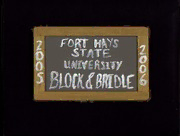
FHSU Block & Bridle Club Scrapbook: 2005-2006
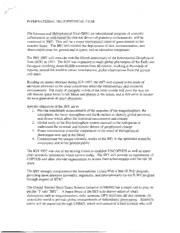
NASA Technical Reports Server (NTRS) 20050241962: International Heliophysical Year

Objektorientierte Programmierung mit JavaScript: Direktstart für Einsteiger
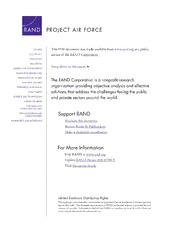
DTIC ADA458978: Valuing Programmed Depot Maintenance Speed: An Analysis of F-15 PDM

NZS BIO GINGER.TH: Importing Fresh Fruit/Vegetables - Ginger (Zingiber officinale) from Thailand (Updated 15 February 2006)

Bétons de granulats de bois
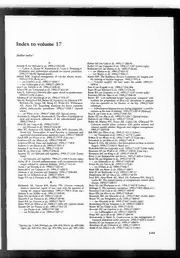
Journal of Vascular Surgery 1993: Vol 17 Index

AMO Overview
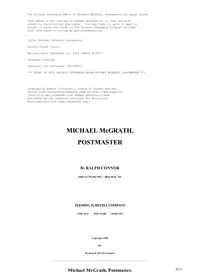
Michael McGrath Postmaster by Ralph Connor
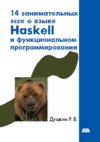
14 занимательных эссе о языке Haskell и функциональном программировании
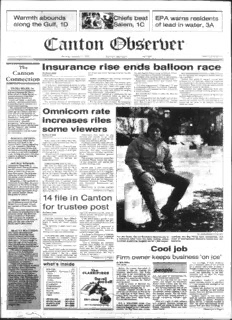
C anton (Extorter

沙滩上的房子: 后现代主义者的科学神话曝光 (A House Built on Sand: Exposing Postmodernist Myths About Science)
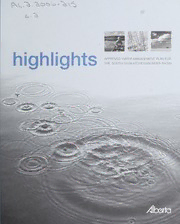
Highlights : approved water management plan for the South Saskatchewan River Basin
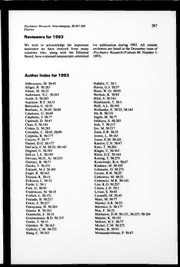
Psychiatry Research: Neuroimaging 1993: Vol 50 Index

Not a problem? girls and school exclusion

